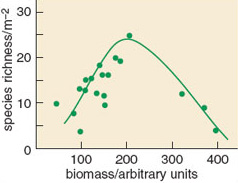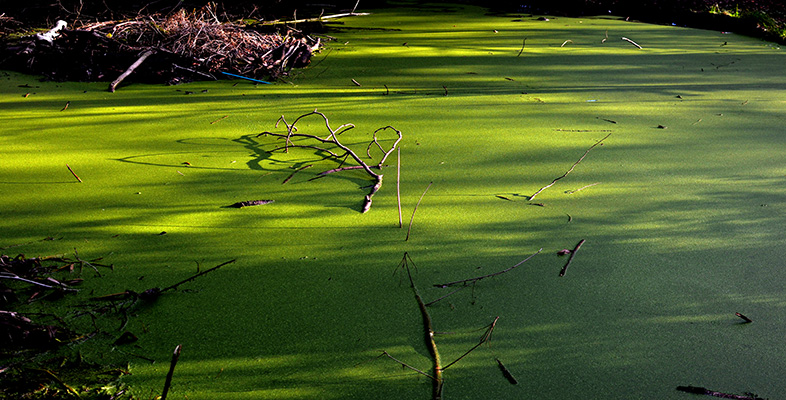1.2 Resource availability and species diversity
A wide range of ecosystems has been studied in terms of their species diversity and the availability of resources. Each produces an individual relationship between these two variables, but a common pattern emerges from most of them, especially when plant diversity is being considered. This pattern has been named the humped-back relationship and suggests diversity is greatest at intermediate levels of productivity in many systems (Figure 1.5).

SAQ 5
How does species diversity differ from species richness?
Answer
Species diversity includes a measure of how evenly spread the biomass is between species (equitability) rather than a simple count of the species present.
An explanation for this relationship is that at very low resource availability, and hence ecosystem productivity, only a limited number of species are suitably adapted to survive. As the limiting resource becomes more readily available, then more species are able to grow. However, once resources are readily available, then the more competitive species within a community are able to dominate it and exclude less vigorous species.
In most ecosystems it is the availability of mineral nutrients (especially nitrogen and phosphorus) that limits productivity. In eutrophic environments these nutrients are readily available by definition, so species diversity can be expected to be lower than in a more mesotrophic situation. It is for this reason that eutrophication is regarded as a threat to biodiversity. Eutrophication of the environment by human-mediated processes can have far reaching effects, because the nutrients released are often quite mobile. Together with habitat destruction, it probably represents one of the greatest threats to the sustainability of biodiversity over most of the Earth.
